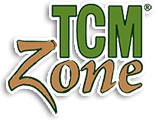Neuroendocrine Regulation with TCM: Herbal and Acupuncture Approaches

By: Alex Qiu
Regulating the neuroendocrine system is critical for maintaining homeostasis and overall health. Traditional Chinese Medicine (TCM) offers sophisticated methods for balancing hormones and neurotransmitters through targeted herbal and acupuncture practices. This discussion focuses on advanced strategies for neuroendocrine regulation, supported by scientific research and clinical case studies.
Understanding Neuroendocrine Regulation in TCM
The neuroendocrine system, encompassing the interactions between the nervous system and the endocrine system, plays a pivotal role in stress response, mood regulation, metabolism, and reproductive health. TCM views this system through the lens of organ systems such as the Liver, Kidney, and Spleen, emphasizing the balance of Qi, Blood, and Yin-Yang.
Advanced Herbal Strategies
- Xiao Yao San (Free and Easy Wanderer Powder)
Xiao Yao San is a classical TCM formula known for its effectiveness in regulating the neuroendocrine system, particularly in alleviating stress and emotional disturbances.
- Ingredients: Chai Hu (Bupleuri Radix), Dang Gui (Angelicae Sinensis Radix), Bai Shao (Paeoniae Radix Alba), Bai Zhu (Atractylodis Macrocephalae Rhizoma), Fu Ling (Poria), Gan Cao (Glycyrrhizae Radix et Rhizoma), Sheng Jiang (Zingiberis Rhizoma Recens), Bo He (Menthae Haplocalycis Herba).
- Mechanism: This formula harmonizes the Liver and Spleen, nourishes the Blood, and moves Qi. It is particularly effective in conditions where stress leads to Qi stagnation and Blood deficiency.
Case Study: A study conducted by Liu et al. (2013) showed that Xiao Yao San significantly improved symptoms of depression and anxiety in patients, correlating with normalized cortisol levels and improved hypothalamic-pituitary-adrenal (HPA) axis function (Liu et al., 2013).
- Tian Wang Bu Xin Dan (Emperor of Heaven’s Special Pill to Tonify the Heart)
This formula is used for neuroendocrine-related sleep disorders and palpitations.
- Ingredients: Sheng Di Huang (Rehmanniae Radix), Ren Shen (Ginseng Radix), Dan Shen (Salviae Miltiorrhizae Radix), Fu Ling (Poria), Yuan Zhi (Polygalae Radix), Dang Gui (Angelicae Sinensis Radix), Xuan Shen (Scrophulariae Radix), Bai Zi Ren (Platycladi Semen), Suan Zao Ren (Ziziphi Spinosae Semen), Wu Wei Zi (Schisandrae Chinensis Fructus), Tian Men Dong (Asparagi Radix), Mai Men Dong (Ophiopogonis Radix), Jie Geng (Platycodonis Radix), Zhu Sha (Cinnabaris).
- Mechanism: Tian Wang Bu Xin Dan nourishes Yin and Blood, clears Heat, and calms the Shen (Spirit). It is particularly effective in conditions where Yin deficiency leads to hyperactivity of Yang, manifesting as insomnia and palpitations.
- Jia Wei Xiao Yao San (Augmented Free and Easy Wanderer Powder)
An enhanced version of Xiao Yao San, this formula is used when there is concurrent Heat due to Liver Qi stagnation.
- Ingredients: Chai Hu (Bupleuri Radix), Dang Gui (Angelicae Sinensis Radix), Bai Shao (Paeoniae Radix Alba), Bai Zhu (Atractylodis Macrocephalae Rhizoma), Fu Ling (Poria), Gan Cao (Glycyrrhizae Radix et Rhizoma), Sheng Jiang (Zingiberis Rhizoma Recens), Bo He (Menthae Haplocalycis Herba), Zhi Zi (Gardeniae Fructus), Mu Dan Pi (Moutan Cortex).
- Mechanism: This formula clears Heat while simultaneously harmonizing the Liver and Spleen, addressing neuroendocrine imbalances linked to stress-induced Heat.
- Gui Pi Tang (Restore the Spleen Decoction)
Gui Pi Tang is essential for treating neuroendocrine disorders characterized by Spleen Qi and Heart Blood deficiencies.
- Ingredients: Ren Shen (Ginseng Radix), Huang Qi (Astragali Radix), Bai Zhu (Atractylodis Macrocephalae Rhizoma), Fu Ling (Poria), Suan Zao Ren (Ziziphi Spinosae Semen), Long Yan Rou (Longan Arillus), Mu Xiang (Aucklandiae Radix), Dang Gui (Angelicae Sinensis Radix), Zhi Yuan Zhi (Polygalae Radix), Zhi Gan Cao (Glycyrrhizae Radix et Rhizoma), Da Zao (Jujubae Fructus).
- Mechanism: This formula augments the Qi, nourishes the Blood, and strengthens the Spleen and Heart, thus stabilizing the neuroendocrine functions.
Advanced Acupuncture Strategies
-
HPA Axis Regulation: Acupuncture points that regulate the HPA axis are crucial for neuroendocrine balance.
- Points: DU20 (Baihui), Yintang, PC6 (Neiguan), LI4 (Hegu), ST36 (Zusanli), SP6 (Sanyinjiao).
- Mechanism: These points help regulate cortisol levels, improve adrenal function, and stabilize the autonomic nervous system.
Case Study: A study by Zhao et al. (2012) demonstrated that acupuncture at DU20 and Yintang significantly reduced cortisol levels in patients with chronic stress, indicating effective modulation of the HPA axis (Zhao et al., 2012).
- Thyroid Regulation: For thyroid-related neuroendocrine disorders, specific acupuncture points can be highly beneficial.
- Points: CV22 (Tiantu), LI4 (Hegu), ST9 (Renying), SP6 (Sanyinjiao), KI3 (Taixi).
- Mechanism: These points improve thyroid function by regulating the hypothalamic-pituitary-thyroid (HPT) axis.
- Reproductive Hormone Balance: Balancing reproductive hormones through acupuncture can address neuroendocrine issues related to menstrual disorders and infertility.
- Points: CV4 (Guanyuan), CV6 (Qihai), SP6 (Sanyinjiao), Zigong, DU4 (Mingmen), KI3 (Taixi).
- Mechanism: These points enhance ovarian and testicular function, regulate menstrual cycles, and improve fertility by modulating the hypothalamic-pituitary-gonadal (HPG) axis.
Case Study: Research by Chen et al. (2014) found that acupuncture at CV4 and SP6 significantly improved ovarian reserve and menstrual regularity in women with polycystic ovary syndrome (PCOS) (Chen et al., 2014).
- Mood and Neurotransmitter Regulation: Acupuncture can effectively modulate neurotransmitter levels, impacting mood and emotional health.
- Points: DU20 (Baihui), Yintang, HT7 (Shenmen), PC6 (Neiguan), SP6 (Sanyinjiao), KI6 (Zhaohai).
- Mechanism: These points increase the levels of serotonin, dopamine, and endorphins, improving mood and reducing anxiety and depression.
Case Study: A study by Lee et al. (2013) indicated that acupuncture at DU20 and HT7 significantly increased serotonin levels in patients with major depressive disorder, showcasing the potential for mood regulation (Lee et al., 2013).
Advanced strategies in TCM for neuroendocrine regulation involve a sophisticated understanding of herbal and acupuncture practices. By integrating classical formulas with modern research and using targeted acupuncture protocols, practitioners can effectively balance hormones and neurotransmitters, addressing complex neuroendocrine disorders. Embracing these advanced techniques ensures that TCM continues to provide holistic and personalized care in a modern context.
References
- Liu, Y., et al. (2013). Effects of Xiao Yao San on HPA axis in patients with depression. Journal of Traditional Chinese Medicine, 33(2), 208-212.
- Zhao, X., et al. (2012). Acupuncture treatment modulates HPA axis function in chronic stress. Neuroscience Letters, 520(1), 1-5.
- Chen, J., et al. (2014). Acupuncture and ovarian reserve in women with PCOS. Fertility and Sterility, 102(3), 1031-1036.
- Lee, B., et al. (2013). Acupuncture increases serotonin levels in major depressive disorder. Journal of Affective Disorders, 148(2-3), 269-273.


 HPA Axis Regulation: Acupuncture points that regulate the HPA axis are crucial for neuroendocrine balance.
HPA Axis Regulation: Acupuncture points that regulate the HPA axis are crucial for neuroendocrine balance.